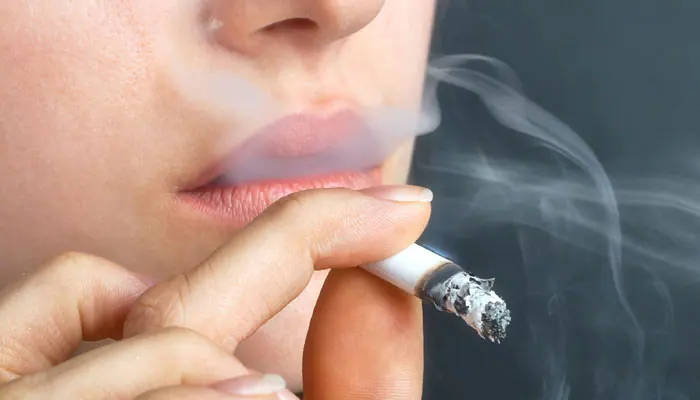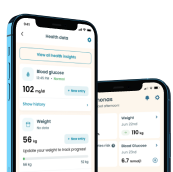How Does Smoking Cause Diabetes? — All You Need to Know

Diabetes is one of the recently growing conditions due to the consistent and steady increase of people consuming more sugar and bad carbs. The same is the case with cigarette smoking, where tobacco and other types of smokers account for a significant chunk of the mortality rate of preventable deaths.
While diabetes and smoking are mutually inclusive, it’s possible for a person with diabetes to also be a smoker. Studies have shown that people with type 2 diabetes mellitus and yet smoke have a higher risk of developing serious health complications than those exposed to only one of the conditions. Smoking is one of the major risk factors for diabetes, and the latter is also a risk factor for immune system compromise, making it easy for smoking to damage the lungs.
However, despite the obvious dangers of having diabetes and still smoking, many people fall in this category and are generally vulnerable to the different complications that both conditions cause.
This article outlines the negative relationship between smoking and diabetes, their consequences on the body, the possible ways to recover and quit smoking, and how to live a healthy life with diabetes.
The Risks of Smoking as a Diabetic
Diabetes and smoking aren’t a great combination as the latter increases the risk of the former developing into a more dangerous and life-threatening condition. Smoking in all forms holds a health risk. However, among cannabis and tobacco smoking, the latter has the biggest risk. And for people with diabetes, these risks become much more heightened.
Many studies on smoking and diabetes have shown that people who have anything related to high blood sugar will only have it worse if they smoke. People with high blood sugar levels who smoke tobacco are at extremely high risk of developing diabetes, while those who already have the condition will have worse diabetes complications. Smoking increases the risk of diabetes due to the chemicals that smokers inhale, such as nicotine.
A 2014 Report on smoking found that the chemicals in cigarettes affect the human cell’s functioning and weaken the immune system that helps to hold off diseases. The impaired cell functioning leads to inflammations all over the body, affecting the insulin level that the body produces. Insulin is the hormone that helps lower blood sugar levels, and the inflammation only alters its production and effectiveness.
Apart from the inflammation, the chemicals inhaled into the body clash with oxygen, creating oxidative stress, which is believed to be a major risk factor in increasing blood glucose levels.
TheFood and Drug Administration (FDA) also considers smoking one of the severe diabetes complication risks. According to the health body, the chances of smokers developing type 2 diabetes are 30–40% higher than nonsmokers, underscoring the significantly increased risk that smokers struggling with high blood sugar and diabetes are exposed to.
The FDA cites nicotine as the major culprit of insulin reduced effectiveness. Therefore, smokers are required to stack up more insulin to regulate blood glucose levels.
Other studies have shown that nicotine also affects blood circulation. Too much high sugar usually leads to a congestion of the coronary arteries—the major blood vessels—such that they don’t circulate blood properly. This condition is known as coronary artery disease.
Coronary artery disease is a serious advanced stage of diabetes and will lead to coronary heart disease, which could subsequently lead to heart failure. People at this stage of diabetes will begin to experience swelling in their legs due to the body holding up water.
Heart failure is a life-threatening condition with an incredibly high mortality rate. Other complications that coronary artery disease can cause include digestive and kidney diseases. Experts consider the condition one of the leading causes of cardiovascular disease in people diagnosed with diabetes.
Many health experts usually seek to help patients with diabetes—and yet still smoke—to stop the habit due to its potential to lead to extremely serious conditions that could eventually lead to death. Apart from directly affecting diabetes, experts also don’t rule out how other smoking-triggered conditions also affect an immune system already compromised with sudden spikes in glucose. The next section considers the other risks of smoking that negatively affect diabetes indirectly.
Additional Risks of Smoking
Smoking tobacco increases your risk of having cancer. Every year in the US, tobacco use consistently takes the lead among the causes of preventable death. Tobacco smoking is estimated to cause the death of one in five people exposed to preventable risk factors.
While smoking is associated with diabetes, its major effect is that it can cause cancer. In the US, smoking causes 20% of every cancer and 30% of every cancer death. Add to that the 80% of lung cancer cases and lung cancer deaths it accounts for.
Smoking increases your chance of having cancers of the throat (pharynx), mouth, voice box (larynx), esophagus, cervix, kidney, bladder, stomach, liver, pancreas, and rectum/colon. You’re also prone to having acute myeloid leukemia if you smoke tobacco.
Apart from cancer, tobacco smoking can damage all the organs in the body like the heart, lungs, reproductive system, blood vessels, bones, skin, and eyes. Below are other risks of smoking:
COPD
Chronic obstructive pulmonary disease (COPD) is one of the leading death causes in the US, and it includes emphysema and severe bronchitis. People who have COPD also have other conditions, but how it severely affects individuals differs.
The disease, COPD, damages the lung’s small airways, making it difficult for the lung to supply oxygen to other parts of the body. Smoking tobacco is the most common cause of this condition, and a person’s risk depends on how often and how long they smoke.
The early symptoms of COPD are shortness of breath while being active, coughing out mucus (phlegm), and rattling or wheezing noises from the chest region. COPD worsens with time, resulting in difficulty breathing even at rest, especially when the person refuses to stop smoking. Some medicines can help improve COPD symptoms but can’t cure it as the condition has no cure.
Emphysema
In an emphysema condition, the tobacco destroys the inner walls between the air sacs, causing the lungs’ air sacs (alveoli) to break down and creating bigger but fewer air sacs. This reduces the oxygen that the body receives, and with time the person struggles to breathe even when resting.
People with emphysema are prone to having other conditions like pneumonia as their lungs become weak. As the disease progresses, emphysema would cause the patient to require a tube or an oxygen mask to assist them when breathing. This disease has no cure, but if the patient quits smoking, it’s possible to slow down its progression with treatment.
Severe Bronchitis
This is a common issue in people who smoke for an extended period. In this condition, the airway produces excess mucus and becomes swollen (inflamed), causing the person to have a long-lasting cough while trying to get rid of the excess mucus. This cough comes and goes, but the symptoms could get better at times.
With time, mucus and scar tissue can block the airway, leading to pneumonia (lung infection). Bronchitis has no cure, but the symptoms can worsen when the patient quits smoking, although the damage won’t worsen.
Effects in Women
Tobacco use damages reproductive health, making it difficult for women to get pregnant. In a case where a pregnant woman smokes, it can also put her life and her baby’s in danger.
Tobacco use can cause the following problem in women:
- Low birth weight in babies and premature birth
- Ectopic pregnancy and placenta problems
- Stillbirth and miscarriage
Finally, babies from women who kept smoking during and after pregnancy could eventually die due to SIDS (sudden infant death syndrome).
Reducing Your Dependency on Smoking

Generally, the best way to improve your health as a smoker is to stop smoking. Once you stop going for the sticks, you’re extremely likely to live a healthier life and revive your metabolism and immunity.
However, in reality, stopping or completely ceasing to smoke is often very difficult. The biggest challenge is the metabolic syndrome and withdrawal symptoms accompanying quitting. You’ll react heavily to stopping smoking, and this will manifest in your body, mood, and general happiness.
In most cases, it’s extremely difficult to quit smoking without the help of rehabilitation and other human services dedicated to helping people with addiction issues—like smoking and drug dependence—quit.
In summary, quitting smoking is a long-term goal. Due to the inherent possibility of a relapse, it’s crucial that you also employ other short-term, realistically achievable goals that minimize the risk that smoking presents to your diabetes condition.
These goals don’t directly require that you stop smoking. However, with real commitment, they can inspire growing independence from tobacco and other drugs and also help you live a much healthier life. They could eventually be a backbone on which you stage a self-improving campaign against smoking. The following sections focus on these goals.
Start Exercising
According to expert studies on nicotine, most people dependent on it have an incredibly poor lifestyle. The good feeling that it brings usually leaves smokers resorting to it as a solution to their physical, emotional, and mental challenges. This is generally where and when the addiction to smoke constantly is built. To decrease this hard and serious tobacco dependence, leading a healthy life is one of the options that people who smoke can go for.
Exercising is the major way to start living healthy. Exercise in its different forms is a highly effective way to distract smokers—especially young adults—from depending on smoking and sustain a long-term health promotion campaign. Exercising can work to revive the immune system and as a health weapon when it comes to smokers.
As an immune system defender, constant exercise is believed to reduce lung cancer risk, one of the major consequences of smoking. It can also improve and sustain a revival of metabolism and aid appetite growth, two significant issues smokers battle with.



As a health weapon, engaging in cardio and resistance training can gradually become a substitute for experiencing high and good feelings. Psychologically preparing your mind to gain satisfaction from exercise such that you don’t have to depend on smoking is a critical move that can help you cut off your daily smoking ritual.
You may still smoke to a certain extent daily, but exercising as an alternative way to feel better will significantly and consistently reduce the number of cigarettes you consume daily or weekly. An efficient way to use exercise as a weapon is to work out until you’re thoroughly exhausted and want nothing more than sleep.
Eat Healthily
Smokers usually have serious issues with healthy eating because they barely have a substantial appetite to eat good food. This phenomenon explains the unhealthy loss of weight that many smokers are exposed to.
Nicotine is an independent risk factor for appetite loss. Not eating starves the body of many natural nutrients that empower the immune system to protect the body’s organs and maintain a healthy weight range.
However, starting a significant appetite revival campaign takes a lot of psychological power. You’ll need to plan with a dietitian or your health provider to eat more and, most importantly, healthily. This is because the underlying diabetes condition usually makes it impossible to just eat any meal. Eating without any conscious consideration of your condition could lead to an unhealthy stacking of simple sugars that raise blood glucose and ultimately complement the damage that smoking already champions.
If you don’t have a dietitian to plan your meals, you can use a trustworthy digital diabetes management app that recommends the best foods for diabetics. These apps are dedicated to helping people with the condition eat the right foods at the right time and are essential for a smoking diabetic.
Generally, using a diabetes management app or the recommendation of a dietitian will see you enjoy a better and healthier life. You’ll need to increase how many fruits and vegetables you eat due to their high vitamin and mineral content that leave the body nourished.
Most fruits and vegetables will work well for people with diabetes. However, you should do well to research which ones can help build up your immune system faster, reducing the effect of the condition.
Eating whole grains, healthy fats, and good carbohydrates (fiber) will help reduce the possibility of a blood sugar spike and the complications of cardiovascular disease. Fiber is necessary because it effectively reduces and regulates blood sugar.
Summarily, eating healthy is good for diabetes and smoking because it reduces blood sugar levels and naturally empowers the immune system for better functioning.
Start and Follow a Treatment Plan
Naturally, a diabetic will need a treatment plan with a doctor when they have a compound risk. A compound risk could be in the form of an advanced stage of diabetes or a smoking diabetic.
If you don’t have a treatment plan already, it’s essential to start the plan and ensure that you follow it thoroughly. You have to understand that smoking and diabetes on their own could worsen complications, and being exposed to both only multiplies their risks. So, a treatment plan is somewhat mandatory and necessary.
The best specialist to meet for a treatment plan is a certified endocrinologist because of their understanding of diabetes and its interaction with other health-compromising conditions like smoking.
Cut Back on Smoking
This particular risk control factor is the ultimate goal of adopting the different smoking reduction and diabetes control goals. All the steps discussed above help reduce the effect of drastically reducing the number of cigarettes you consume daily or weekly.
Realistically, no number of cigarettes is deemed healthy, and all of them have serious health hazards. However, the damage from fewer sticks is lesser, reinforcing why it’s medically advised to cut back on smoking. Also, it’s an excellent alternative if an attempt to quit doesn’t fall through as planned.
You should understand that you may need the help of a health specialist or even sign up for several appointments to effectively reduce your sticks. You should also commit yourself to the various steps outlined in this article, as they’ll help you live and stage a better campaign against smoking.
It’s important that you don’t put too much pressure on cutting your cigarette consumption, as it’s seemingly easy to fall back to your initial pattern. Such relapse can deal a serious blow to your confidence in ever reducing or quitting smoking. Rather, you need to make the process look as natural as possible to reduce the urge and pressure to smoke the way you used to.
The reduction of consumption option is vital as it could be the best way to reduce smoking if quitting seems like a far stretch at the beginning.
Quitting Smoking
Smoking cessation is one of the more challenging steps to take. Unlike the above section that deals with reducing dependence on smoking and developing your condition, this section deals with smoking cessation in all its forms.
While quitting smoking is challenging, you should understand that it’s the best and only certain way to ensure chronic disease prevention or at least disease control if a lot of damage has been done already.
According to the FDA, it’s never too late for smoking diabetics to quit smoking as every stick worsens the smokers’ health and their diabetes condition. Any age group can successfully solve the issue of smoking dependence, adopt a healthy lifestyle, and start a new physical and psychological healing journey.
The FDA confirms that research supports positive diabetic reactions after quitting smoking. The health and food body states that insulin becomes more effective at lowering and regulating blood sugar levels eight (8) weeks after completely ceasing and ending dependence on smoking. Namely, ceasing to smoke significantly reduces insulin resistance and promotes a better body response to fight against diabetes.
The main person to talk to about stopping your smoking habit is your diabetic doctor. Apart from speaking to your doctor, you can get real help by connecting to mobile experts that help people quit smoking. The FDA also suggests several online resources that encourage the campaign against smoking for support.
However, irrespective of your steps, you need to know that smoking is an addictive, impulsive behavior and doubles as one of the worst dependencies to develop. Like most dependency substances, seeking to quit will trigger withdrawal symptoms that could push you to the limit. Nevertheless, you should know that this phase is only temporary, and overcoming it will cut off total dependence on any form of cigarettes.
Moreover, quitting comes with many benefits as it reduces your risk of diabetic retinopathy, a condition characterized by diabetes triggered gradual but steady blindness. Also, you’ll end up living an incredibly healthy life and avoid both short and long-term complications.
Tips to Quit Smoking
While professional help remains the most effective option for quitting smoking, certain tips can be very helpful to your journey of recovery, as highlighted below.
Stop at Once
A research performed in 2016 proved that people who stopped smoking in totality ended up being more successful in abstaining than those who adopted a more gradual cutting down of the number they smoke. Again, the study revealed a gradual reduction in smoking to cause a repetition of the withdrawal symptoms at every reduction stage, and this phenomenon, in most cases, becomes unbearable.
Adopt a New Healthful Habit
While it’s difficult to fully replace a dependency addiction, working with your health professional to learn new healthful habits can help you win the battle. Exercising, for example, can help distract you from the sense of purposelessness and depression that smoke avoidance brings. You should also spend time with a support group that has the same goal as you for the best benefit.
Counseling
Counseling is critical in your journey to quitting smoking. You should register with a therapist if you need encouragement and recommendations on living happily without smoking.
Risks of Quitting Smoking as a Diabetic

While there’s barely any risk to think of as it relates to stopping smoking, one truth lingers — as a diabetic, it’s possible to develop unhealthy habits in the process of quitting. The major two concerns are:
Risk of Overeating
The main concern for diabetic quitting smoking is the risk of overeating. After quitting smoking, you’re extremely likely to develop a big appetite, and more often than not, former smokers tend to overeat at the beginning stages of their recovery. If not properly checked, this could become a permanent phenomenon, and for a diabetic, this can be dangerous if the new cravings are for high sugar or starch foods.
High Blood Sugar
For many reasons, people who quit smoking are usually fond of picking new habits that negatively affect their blood sugar. A study on smokers carried out in 2015 showed that people that quit smoking experienced high blood sugar levels in their first three years following recovery.
The increased blood sugar levels confirmed in the study are a serious concern for people with diabetes. Hence former smokers with diabetes need to employ professional help between the stage of quitting and the next few years of living a healthy life.
Final Words
A mix of diabetes mellitus and smoking is a serious condition that demands effective handling to keep blood sugar levels and body weight in the safe range. This detailed guide has extensively considered the various ways to handle smoking as diabetes and what to expect in the process of adopting a healthier lifestyle.
You should understand that, in your journey to quit smoking, you shouldn’t despair, irrespective of how many times you may relapse. All you need to do is get professional help and recover the will to end your addiction.
Also, after successfully cutting off smoking, you must ensure that you continue your healthy lifestyle to help your body reduce diabetes risk and other damages caused by smoking and consistently high blood sugar.
Healthy eating is among the major steps you should take to sustain healthy living. As already stated in this guide, using a diabetic meal planner is one way to ensure healthy eating. Our Klinio app is one of the top management apps you can get as a diabetic to eat the right food and live a healthy life. Apart from being easy to use, it ensures that you get the latest healthy, tasty meals that regulate blood sugar while suggesting basic workout routines.
Take a quiz and get your diabetes-management plan today!









